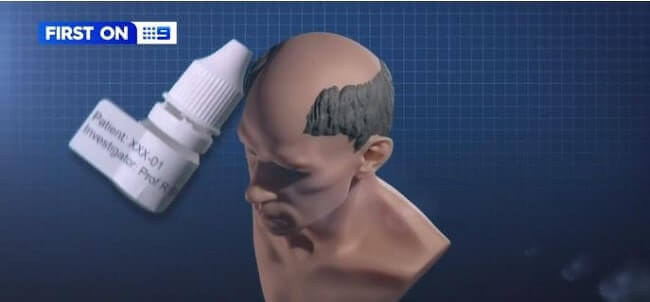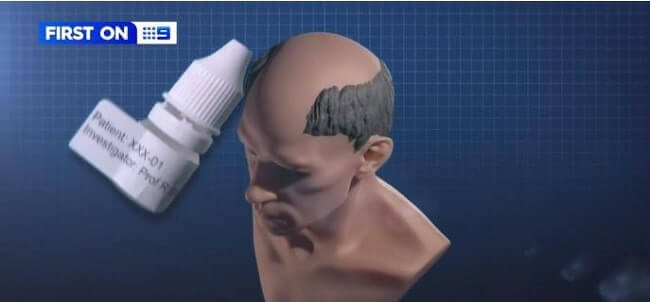In my old posts on Bimatoprost, I mentioned the related glaucoma drug Latanoprost. While Bimatoprost is a synthetic prostamide analog, Latanoprost is a prostaglandin F2? analog and it prolongs the anagen phase of the hair cycle via the prostaglandin effect.

Latanoprost for Hair Growth Trial
The renowned Dr. Rodney Sinclair and his Melbourne based Sinclair Dermatology clinic will test Latanoprost eye drops for hair growth in a new clinical trial. I have covered Dr. Sinclair numerous times on this blog, including in my post on “Oral Minoxidil“. Most recently, his clinic has taken the lead in testing Hope Medicine’s HMI-115 prolactin receptor antibody.
Latanoprost (sold under the brand name Xalatan) is a medication that is used to treat increased pressure inside the eye. This includes ocular hypertension and glaucoma. It was approved for medical use in the US in 1996. However, it is not FDA approved to treat hair loss. One of the noted side effects of Latanoprost (off-label use) is an increase in the thickness and density of eyelash hair.
However, this type of cosmetic use near the eye region can come with serious side effects in the eyes. Moreover:
“The overgrowth of lashes may result in lash misdirection and distichiasis, and an extra row of hair at the aperture of the meibomian glands that can result in eye irritation.”
Prostaglandin Analogs
Latanoprost is a prostaglandin F2? (PGF2? or PGF2a) analog, similar to Travoprost and Tafluprost. A 2012 German study of 16 men with androgenetic alopecia found that Latanoprost significantly increased hair density (terminal and vellus hairs) at 24 weeks compared with baseline. A 2015 review concluded that the most promising alternative clinical uses of prostaglandin F2? analogs beyond the eyelashes include: androgenic alopecia; chemotherapy-induced alopecia; and alopecia areata.
Even over 20 years ago, a detailed 2002 study on stump-tailed macaques found that Latanoprost had a potent positive effect on hair growth. Note that Aneira Pharma is developing a hair loss product that will likely contain Latanoprost, Cyclosporine and Minoxidil.
Also, Dermaliq Therapeutics (US) is working on a topical Prostaglandin F2? analogue product for male pattern baldness. I covered the company in my post on increasing PGE2 and PGF2? for hair growth. On a related note, make sure to read my posts on PGD2 inhibition for hair growth.
Misplaced Skepticism
Most readers are skeptical about existing drugs such as Bimatoprost and Latanoprost doing much for scalp hair growth. However, in my opinion, we should welcome every new mechanism of targeting hair regrowth. Even if each one is “only” as effective as the tried and tested topical Minoxidil.
Some products might just make existing hair thicker rather than re-grow lost hair. However, this thicker scalp hair is then less easily destructible by the ravages of dihydrotestosterone (DHT). Moreover, if we have many different alternatives to tackle hair loss, the chances are that each of us can find at least three products that cause him or her no side effects.
Ultimately, a cocktail of topical products could multiply the hair growth effect. A number of new companies that sell topical finasteride are also including Latanoprost as part of the ingredients. Delivery mechanisms continue to improve, resulting in superior product absorption and penetration into the scalp.

